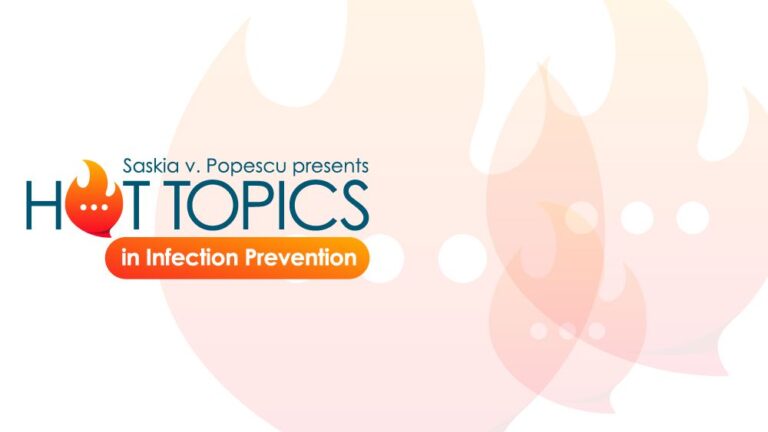In this IPC Hot Topics, Saskia v. Popescu, PhD, MPH, MA, CIC, FAPIC, discusses the need to return masks for COVID-19, the outbreak in Virginia, and articles worth reading.

Preparation for COVID-19
Are we ready for COVID this fall? This question comes up more and more often, and the truth is that I can’t say “yes” with confidence. Katherine Wu, PhD, and editor for Atlantic, recently called attention to this point regarding masking mandates and hospital efforts, highlighting the challenges hospital infection preventionists (IPs) and epidemiologists face when it comes to mandates masking in the fourth year of the COVID-19 pandemic. “But in hospitals and policy, infection prevention experts shared one sentiment: They were almost certain that masks should return, probably by the end of the calendar year. The big question was when exactly,” Wu wrote. This will be an increasingly common discussion as we move closer to the winter months and hospitals and NPs work to incorporate a non-emerging COVID-19 pandemic into the response and seasonal restrictions related to respiratory viruses.
In reality, we are likely to see an increase in cases– whether it’s a real increase or not – as people return to pre-COVID-19 habits. What data do we use? What thresholds should determine action, and what happens if COVID cases are high but flu or RSV numbers are not? More to come…but food for thought as we navigate this new situation for many of us.
Also good news: BA.2.86, a new COVID variant, is likely less immune than previously feared.
Virginia battles meningococcal outbreak
Twenty-seven people were affected by a statewide outbreak of meningococcal disease in Virginia, five of whom died from the infection. Neisseria meningitidis Serogroup Y is the culprit and the driving cases are far higher than what the state normally sees. “So far, health authorities have not identified a common risk factor, although genetic sequencing of the bacterium suggests that the infections are closely linked. Most patients are black or African American adults between the ages of 30 and 60. Only one received the MenACWY vaccine,” according to an article in CIDRAP.
“The VDH urged parents and health care providers to ensure that children receive all recommended vaccines, including MenACWY, which is recommended for adolescents before entering 7th grade, with a booster dose before the 12th year. The vaccine is also recommended for people at increased risk of contracting the disease.
Interesting things to read:
- CDC MMWR on Norovirus Outbreak Via Oysters–Not particularly surprising, but nonetheless interesting to read. “On December 7, 2022, the Texas State Department of Health (DSHS) Public Health Region 6/5 South (PHR 6/5S) and the DSHS Consumer Protection Division were notified by the Health District of Galveston County of 10 consumer complaints of post-consumer illness. of raw (9 complaints) and smoked (1) oysters at local restaurants from November 27 to December 4. Signs and symptoms began within 8 hours of consumption and included diarrhea, nausea, or vomiting. Initially, no consumer sought medical care. Oyster tags from 3 associated restaurant inspections determined that the oysters came from Oyster Harvest Area TX 1 (TX 1) in Galveston Bay, Texas.
- Long-term COVID and health concerns— A large study of veterans shares insight into the impact of COVID-19 infections on long-term health, noting that they “saw a significantly increased risk of dozens of illnesses, including heart failure.” heart disease and fatigue, sometimes years after infection. Overall, the team estimates that the public health impact of COVID-19 is more than 50% greater than that of cancer or heart disease.


